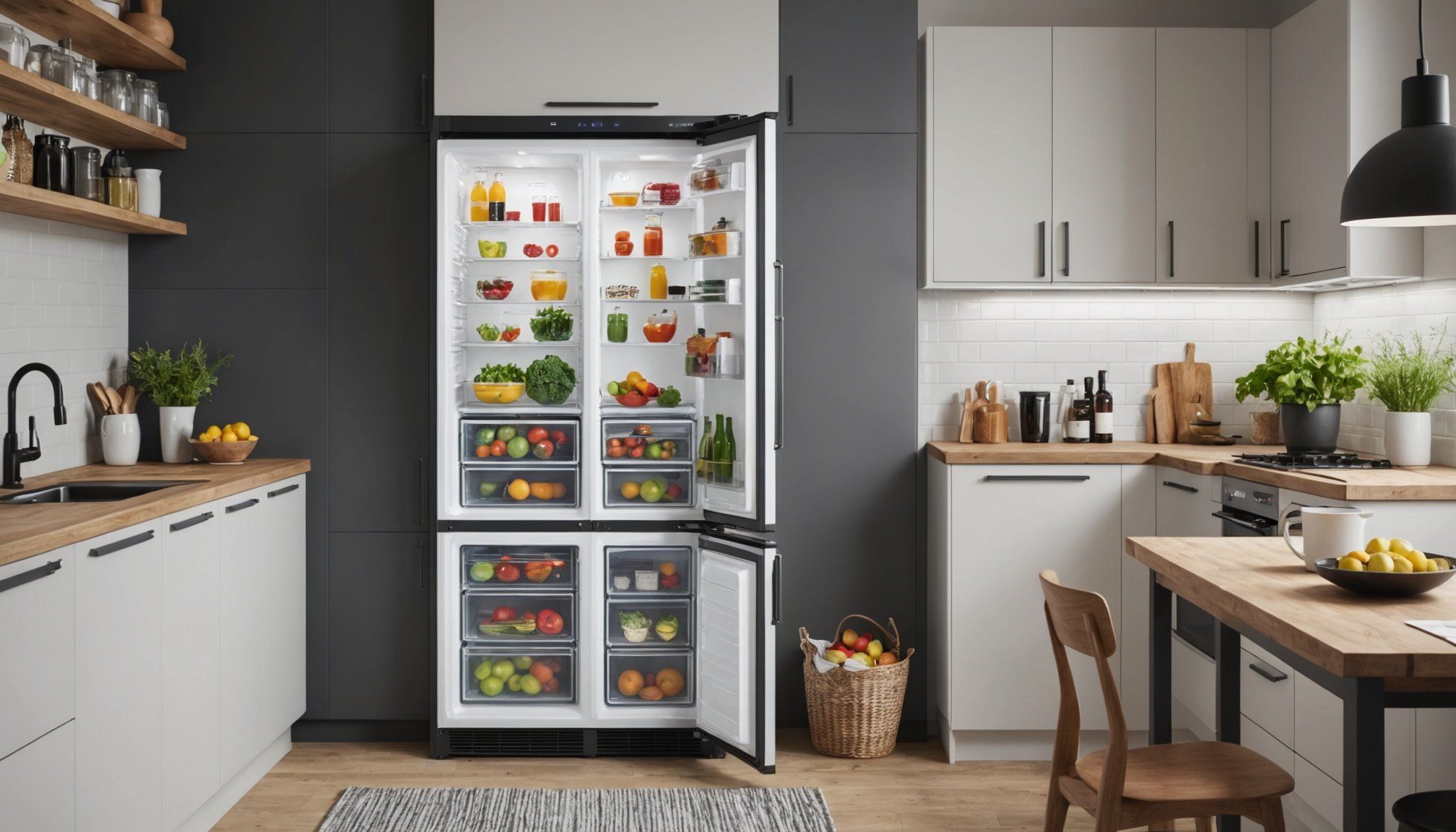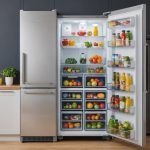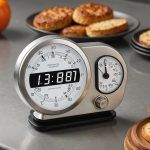Understanding Refrigerator Sizes
Navigating the realm of refrigerator sizes can be a bit of a puzzle, especially when accounting for family needs and UK standards. It’s vital to differentiate between size classifications to ensure a perfect fit for your lifestyle and kitchen space. Generally, these classifications range from compact to full-size, with each offering varying capacities to accommodate diverse household requirements.
Average refrigerator capacities, especially those suited for families, typically fall into three main categories: small (around 150-250 litres), medium (250-350 litres), and large (over 350 litres). These volumes are crucial to assessing how much food storage space is available, correlating directly with the number of occupants in a house.
Also read : Choosing the Ideal Refrigerator Size for Expanding Families in the UK: An In-Depth Guide
In the UK, understanding measurements specific to kitchen appliances is fundamental. Unlike some other regions, UK standards tend to reflect smaller physical space availability, demanding precision in choosing appliances that fit. Therefore, it is important to double-check measurements not only of the refrigerator itself but also of the available space in the kitchen, including width, height, and necessary clearance. This ensures smooth installation and optimal function. Selecting an appropriately-sized refrigerator hinges on understanding these key elements, contributing to a functional and efficient kitchen setup.
Evaluating Family Needs and Lifestyle
Understanding your family lifestyle is crucial when choosing the right refrigerator size. Start by assessing your family’s food storage requirements, which largely depend on the number of members and your cooking frequency. If you have a larger family, you might need more storage, especially if you frequently prepare meals at home.
Also read : The definitive handbook for choosing ideal bar stools for your kitchen island in the uk
Consider habits like weekly meal preparation or bulk shopping. These activities generate different storage needs, influencing the refrigerator size selection. Families that cook daily might require more space to store fresh groceries, while those cooking less frequently might prioritise freezer capacity for bulk-stored items.
Meal planning can significantly impact your needs. Efficient meal planning may lead to more organised storage, fitting a smaller fridge even for larger families. Conversely, spontaneous food plans might demand a larger fridge to accommodate various ingredients.
Ultimately, evaluating these factors provides insights into selecting a refrigerator that aligns with your family’s lifestyle, ensuring it supports your daily food routines effectively. Adapting your choice to match specific family needs will lead to smoother meal preparation and better food management within your kitchen space.
Measuring Available Space in the Kitchen
When planning for a new refrigerator, understanding the available kitchen space is crucial. Accurate kitchen measurement helps ensure a good fit, both in terms of aesthetics and functionality. Start by measuring the width, depth, and height of the niche where the refrigerator will be placed. Be certain to account for refrigerator space with clearance for doors to swing and adequate airflow, essential for efficient cooling and performance.
Refrigerators need enough space around them to dissipate heat. For proper airflow, typically allow at least 2.5 cm (1 inch) on the sides and back. Check your manufacturer’s fitting guidelines for specific clearance recommendations. With UK kitchens often offering less room, maximizing every centimetre is important.
Assess the impact of your kitchen layout. Consider the flow of your cooking area, ensuring doors won’t obstruct movement. Revolving doors or tight corners can affect accessibility. Think about how your refrigerator should fit into the broader kitchen design to ensure it complements your space.
By thoroughly measuring and planning the available space, you can securely install a refrigerator that meets both practical needs and your kitchen’s aesthetic, avoiding costly resizing or replacements down the road.
Comparison of Different Refrigerator Models
Choosing the right refrigerator model can be a daunting task with many options available. A common choice is the top-freezer model, known for its cost-effectiveness and energy efficiency. It offers ample freezing space but might require bending to access the fridge compartment, which can be less convenient for frequent users. In contrast, the bottom-freezer model provides easier access to fresh food at eye level, though it typically comes with a higher price tag.
The side-by-side refrigerators split the unit vertically, allowing for equally accessible fridge and freezer sections. Their narrow door swing makes them ideal for kitchens with space constraints, yet they may lack the wide shelving needed for storing large items.
When comparing features, consider smart technology, which enhances convenience with options like app-controlled temperature settings. Adjustable shelving and humidity-controlled drawers can significantly impact food storage organisation. Keep in mind that UK consumers often highlight the importance of energy efficiency and practical layouts in their reviews.
Understanding the varying designs and capacities can significantly assist in making an informed decision that enhances your kitchen’s functionality while accommodating your lifestyle needs efficiently.
Analysis of Energy Efficiency and Cost
In the UK, understanding energy efficiency ratings for refrigerators is crucial for making informed decisions. Energy efficiency ratings range from A+++ (most efficient) to D (least efficient). This system aids in determining the running costs associated with different models, enabling buyers to evaluate long-term savings. A highly efficient refrigerator, though possibly more expensive upfront, can significantly reduce energy bills over time.
When contemplating larger versus smaller models, consider the balance between size and energy consumption. Larger refrigerators often consume more power, leading to higher running costs. However, this isn’t always the case, as some smaller models might lack advanced technology to optimise energy use. Therefore, examining appliance ratings is essential. Buyers should study both the energy label and consumer reviews focusing on efficiency in real-world use.
It’s vital to grasp the cost implications thoroughly. While an initial investment in an efficient refrigerator may appear daunting, the potential for yearly savings often justifies the price difference. Moreover, rising energy costs make an efficient model a wise choice in the long run. Selecting a refrigerator that aligns with both size preferences and energy efficiency needs ensures a practical and economical kitchen appliance investment.
Installation Considerations
When it comes to refrigerator installation, ensuring a seamless fit and optimal performance is essential for both functionality and longevity. Begin by considering whether a DIY installation suits your skills or if hiring professional services is warranted. A DIY approach can save money, but professional installation guarantees expert handling, precise fitting, and alignment with appliance standards.
Fitting tips are crucial for those opting for DIY. Ensure that the refrigerator is levelled to avoid operational issues. Use a spirit level to check adjustment regularly. Proper levelling prevents door misalignment and ensures efficient cooling. For professional installations, discuss accessibility and proper placement within your kitchen layout. Choose experienced technicians familiar with UK appliance fitting guidelines to manage any spatial challenges.
Ventilation is key during installation. Ensure there’s ample space for airflow to prevent overheating and maintain energy efficiency. Adequate clearance allows the condenser to function effectively. Adhere to manufacturer recommendations regarding space. If in doubt, seek advice from the professionals or refer to the appliance manual.
Be mindful of accessibility and future servicing needs. An easily accessible refrigerator not only facilitates daily use but also simplifies future maintenance. Effective planning during installation sets the stage for a smooth-running kitchen appliance.
Refrigerator Size Guide by Family Size
Selecting the right refrigerator according to your family size ensures optimal storage without wastage. Different family sizes require varied capacities to match their everyday needs effectively.
Small Family (1-3 members)
For a small family, focus on a refrigerator with a capacity of around 150-250 litres. This size accommodates basics while leaving room for extra items during special occasions. Consider models with flexible storage options like adjustable shelving to maximize use through smart organization.
Medium Family (4-6 members)
Families falling into the medium category will benefit from settings offering 250-350 litres. This capacity supports frequent meal preparation and larger volumes of fresh produce. Look for features such as split refrigerator sections or dual temperature settings, enhancing the efficiency of food preservation.
Large Family (7 or more members)
For larger families, refrigerators exceeding 350 litres are ideal to meet expansive storage requirements. These models typically provide substantial freezer spaces and specialized compartments for precise organization. Large families often require design solutions like wide shelves or additional drawers to accommodate bulk-buying habits.
By choosing the appropriate capacity, each family size can maintain a balanced food inventory, enhancing both freshness and convenience. Tailoring the refrigerator to your household’s dynamic can transform food management, simplifying daily routines and unforeseen culinary needs alike.











